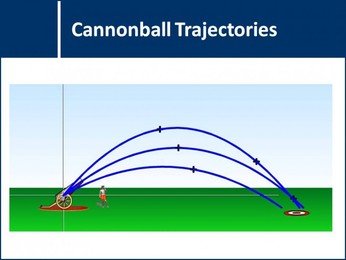Crossfire off South Shore - BOCA race 2015. Yacht navigation requires a good understanding of velocity, distance and time.
|
Home >> AP Physics I >> Kinematics
|

Kinematics is the study of motion. Specifically, just the mathematical description of the motion without considering what causes the motion. The latter study is known as dynamics. The father of kinematics was Galileo Galilei, and this formed the foundations that Isaac Newton built the science of dynamics upon. At AP level we concern ourselves purely with motion that is undergoing uniform acceleration. To consider anything further requires the use of calculus, which is not covered in this course.
We begin by analysing one dimensional motion and formulating the three main equations of motion. Once the students are comfortable solving problems, we move on to two dimensional motion, specifically projectiles.
We begin by analysing one dimensional motion and formulating the three main equations of motion. Once the students are comfortable solving problems, we move on to two dimensional motion, specifically projectiles.
The biggest jump from IGCSE to higher level physics (IB, A level or AP) starts here, when students realise that problem solving is no longer a simple matter of choosing an equation, rearranging it and sticking the numbers in to get the answer. The problems need to be planned out carefully and frequently require intermediate steps to tackle them. The key to this is usually a carefully drawn diagram and an understanding of what is actually happening, i.e. is the object accelerating of decelerating. This is the beginning of a process that we call 'modelling'. A valuable skill to have for many careers!
Unit 1 Student Workbook Updated: Jan 2017
Unit 1 - Kinematics Revision Questions
- 10 - 16% exam weighting for Multiple Choice questions
- 16 - 19 lessons